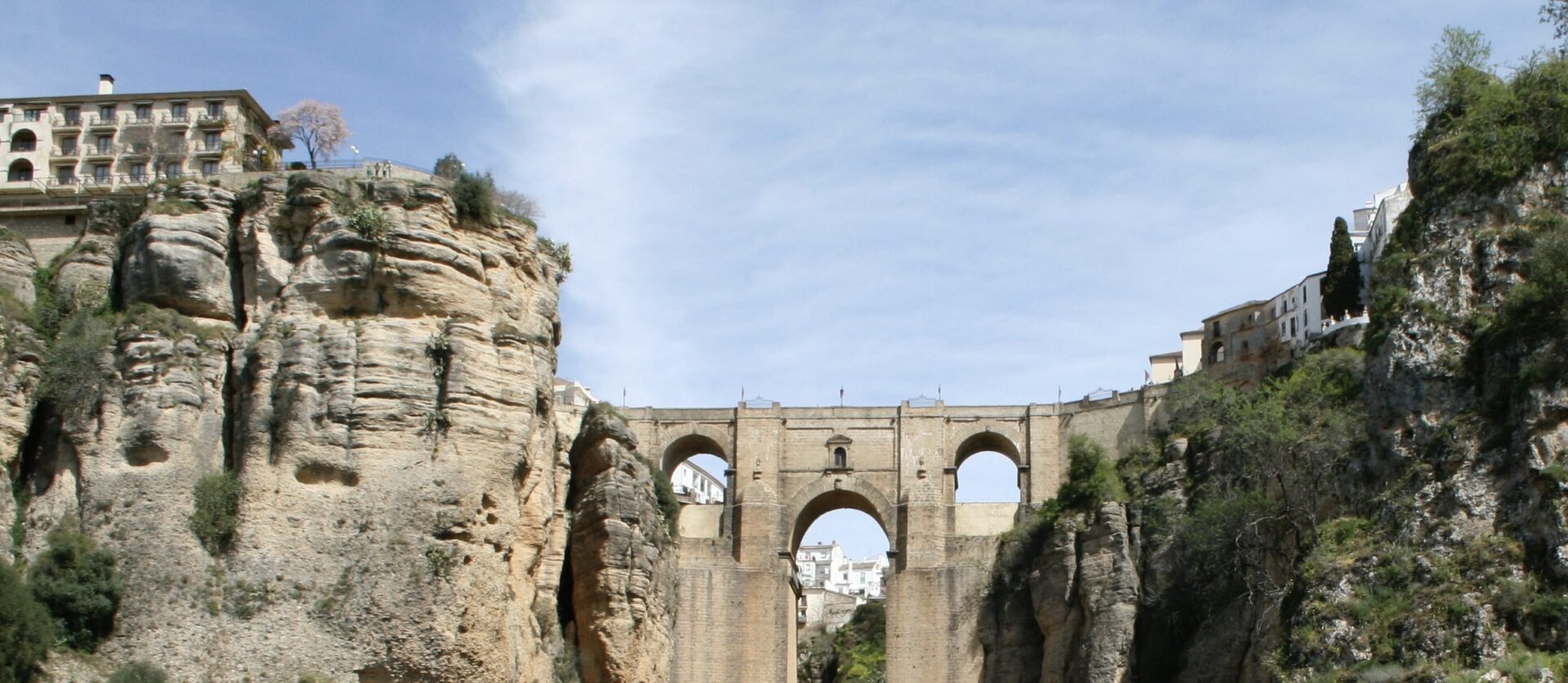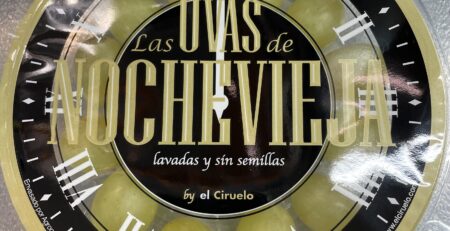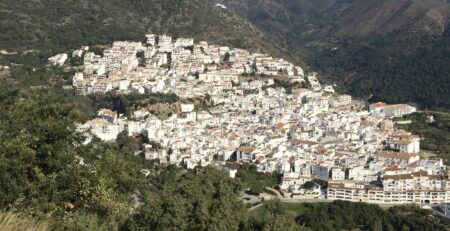The 5 main sights of Ronda
Ronda is one of Spain’s oldest cities and is located about 50 kilometres inland between the Sierra de las Nieves and the Sierra de Grazalma in central Andalusia at an altitude of about 750 metres above sea level. This altitude ensures stunning views of the wide landscape all around. Writers Ernest Hemmingway and Orson Welles lived in Ronda for many years and described the beauty of this area. Besides the beautiful surroundings, Ronda is also known for its Puente Nuevo, El Tajo de Ronda and bullfighting. The 5 main sights of Ronda:
Tajo de Ronda, the Gorge of Ronda
The city of Ronda is literally split in two by the river Guadalevín. Over the centuries, this river has carved a more than 100-metre-deep gorge between the districts of Mercadillo (market) and La Ciudad (the old town). The gorge, El Tajo colloquially, is about 50 metres wide and 500 metres long. Both from the bridges and from the gorge you have a great view of this special piece of nature.
Puente Nuevo
El Tajo is spanned by three bridges. The oldest is Puente San Miguel and was built on the foundations of an old Roman bridge and is therefore also known as Puente Romano. This lower bridge is located just outside Ronda’s city walls, near the Puente Viejo (the old bridge). This bridge was built in the 16th century, as a better connection between the two parts of the city was needed.
But Ronda’s most important and imposing bridge is the Puente Nuevo, whose construction took from 1751 to 1793. With its 3 arches, the bridge is 70 metres wide and has a height of 98 metres. This bridge is the design of the architect José Martín de Aldehuela. According to legend, he ended his life to prevent him from ever building anything to top his Puente Nuevo again. In reality, he died a natural death in Málaga in 1802, at the age of 72. This new bridge has the most beautiful and impressive views, making it one of the most photographed locations in Spain. If you descend to the bottom of the gorge from the Casa del Rey Moro, you will come to a spot where you can take beautiful photos of the bridge.
The cradle of modern bullfighting
Ronda is also known as the cradle of modern bullfighting. One of the most famous toreadors of the 18th century, Pedro Romero, was born in Ronda. He opened the Plaza de Toros, Spain’s oldest (still existing) bullfighting arena, in 1785. This arena, also built by architect José Martín de Aldehuela, is home to one of Spain’s most famous schools of bullfighting. Nowadays, only four bullfights are held a year (in September), the rest of the year the building serves as a museum.
Museo Taurino, bullfighting museum
The Museo Taurino bullfighting museum was opened in 1984. Here you will find everything about the history of the Plaza de Toros through engravings, lithographs, drawings and numerous other relics. The permanent exhibition focusing on the two great bullfighting dynasties also includes original costumes. The building itself is a museum in itself. It is classified as cultural heritage. It was the first bullfighting arena built entirely of stone. Its neoclassical architectural style is unique and is characterised by 2 galleries of 5 rows of stands each, supported by 136 columns and 68 arches. The arena seats around 5,000 people.
The old historic centre of Ronda
La Ciudad (the old town) is somewhat dominated by the Plaza Duquesa de Parcent, where the cathedral Santa María la Mayor (16th century) stands. It used to be a mosque and still has 4 Moorish domes. The bell tower stands on the foundations of the former minaret. Walking around Ronda is certainly not a punishment. There are so many sights, such as Moorish city walls and gates, the church Iglesia de Nuestro Padre Jésus, the Moorish baths (Baños Arabes), the Palacio del Marques de Salvatierra, the Palacio de Mondragón containing the Museo Municipal (urban archaeological musem) and, of course, the Balcón del Coño, from where you have spectacular views! It’s not just art and culture that counts; in Ronda you can also enjoy delicious food and drinks in the many bodegas and restaurants.
One day is too little
Actually, one day is too little if you want to explore Ronda. There is so much to do and experience that you would actually want to spend several days there. Then we have the perfect place for you; Ronda is easily accessible from Coín, where B&B Finca La Toronja is located, via the A-366 motorway. Via this road you drive in about an hour straight through Sierre de las Nieves via the white villages of Alozaina, Yunquera and El Burgo to Ronda. The journey alone is spectacular for its many views and beautiful nature.




